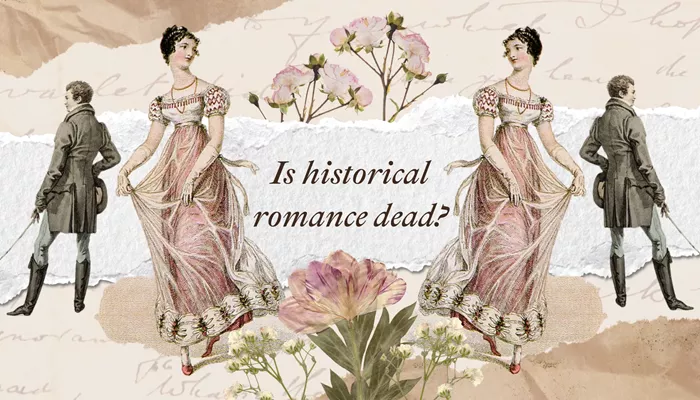For decades, historical romance has been a beloved cornerstone of the romance genre, from the early works of Jane Austen to the sweeping narratives of Georgette Heyer, and the modern-day triumphs of authors like Lisa Kleypas and Julia Quinn. But in recent years, there has been growing concern about the future of the subgenre. With the decline of mass market paperbacks and shifting distribution channels, historical romance — once a mainstay in bookstores and supermarkets — seems to be on life support.
The decline has been evident, with top authors like Kleypas and Quinn releasing fewer historical romances, and midlist authors being dropped by their publishers. Sarah MacLean, a prominent figure in the romance community, has been vocal about the issue, questioning whether the genre is dying or if the industry itself is responsible for its demise. According to MacLean, one of the key factors contributing to this downturn is the end of the mass market paperback. These affordable, pocket-sized books have long been a gateway for readers to discover new authors, especially in the romance genre. However, as publishers pivot to more expensive trade paperbacks, the distribution of mass market paperbacks has shrunk significantly, leaving historical romance books relegated to online platforms like Amazon, rather than being readily available in stores.
MacLean notes that mass market historical romances once sold in the tens of thousands, often making their way into big-box retailers like Target and Walmart, where midlist authors could see impressive sales numbers. But as these chains shift away from mass market books in favor of pricier trade paperbacks, historical romance books are becoming harder to find on the shelves. With Walmart and Target scaling back their romance sections and independent bookstores focusing on other genres, the historical romance genre faces a dilemma: fewer readers are stumbling upon it in physical stores, making it harder for new authors to gain traction.
Yet despite these challenges, there are signs that historical romance is not dying, but evolving. Authors like KJ Charles and Alexis Hall are reinvigorating the genre with queer historical romance, often exploring themes of dismantling patriarchy and challenging societal norms. Amy Brewer, a literary agent, argues that historical romance is simply shifting to reflect contemporary issues, including marginalized voices and new perspectives. Elizabeth Tucker, co-owner of a romance bookstore, also believes that historical romance will eventually experience a resurgence, predicting that it will be back in popularity within the next few years.
Packaging, too, is an issue. MacLean points out that the presentation of historical romance has not kept pace with trends in other subgenres, such as romantasy (romantic fantasy). While readers flock to series like A Court of Thorns and Roses, many don’t immediately make the leap to traditional historical romances, even though the two genres share much in common, such as world-building and romance-driven plots. As more readers gravitate toward books with strong world-building elements, the need for historical romance to modernize its packaging becomes more apparent.
One crucial aspect of historical romance’s continued relevance lies in its political dimension. MacLean argues that historical romance has long been a space where authors tackle important social issues, such as women’s rights, race, and class, often through the lens of love and triumph. Today’s authors are carrying this torch forward, with writers like Adriana Herrera, Diana Quincy, and Felicia Grossman offering diverse and nuanced representations of marginalized groups. Herrera’s work, for example, explores the experiences of Afro-Latinx women and the complexities of power dynamics within the historical context, while Grossman delves into the Jewish experience.
Despite the current challenges, MacLean remains optimistic about the genre’s future. She points to the growing number of new authors in the historical romance space, many of whom are choosing to self-publish or explore non-traditional avenues. Historical romance, she argues, is not dead — it’s simply undergoing a transformation. As readers seek more diverse voices and fresh takes on historical narratives, the genre will continue to thrive.
In the end, MacLean offers a hopeful message: “If romantasy fans just read two historicals, the subgenre would find new fans.” Historical romance, with its deep historical roots, captivating characters, and rich storytelling potential, may yet have more to offer. As more readers discover the genre’s depth and complexity, the “death” of the duke may turn out to be a false alarm.

